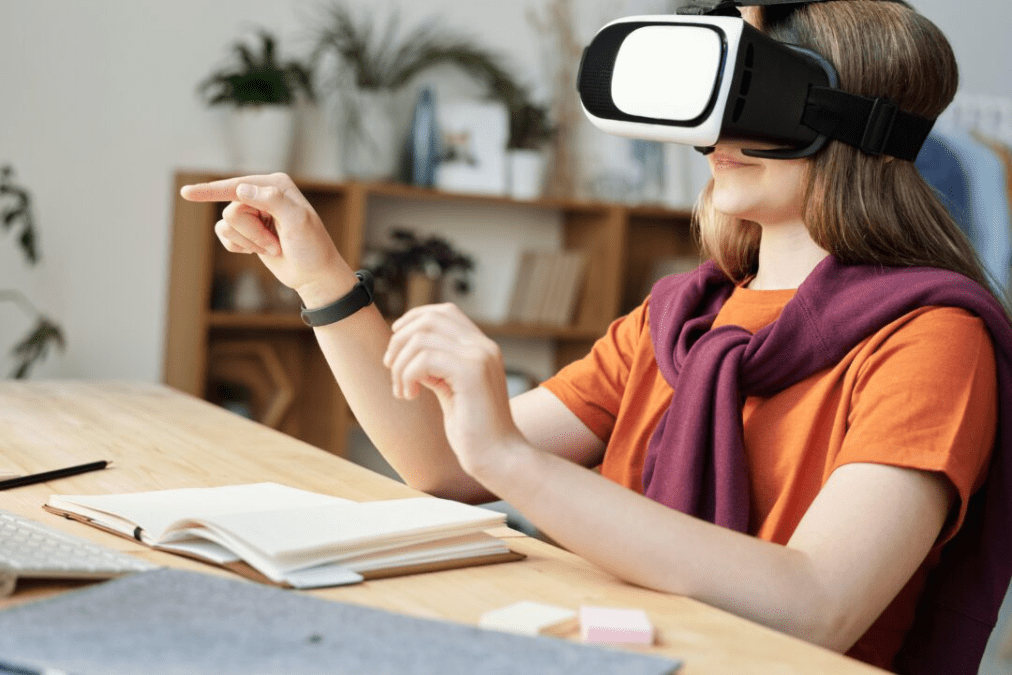
STEM education in the 21st century
STEM encapsulates four significant disciplines: Science, Technology, Engineering, and Mathematics. In contrast to other subjects, STEM learning helps shape the intellectual self through skills such as critical thinking, problem-solving, and creativity. STEM learning is not just about mastering subjects but also about leveraging knowledge to innovate.
STEM education is critical in the 21st-century world for various reasons, some of which are listed below:
- Critical thinking and problem solving have become essential components of any professional’s life because of the changing dynamics of skills needed in the future of work
- In a future work world, science and technology will be the basis for most of the professions. Today’s children who will be the workforce of the coming decades will need decision-making and creativity as key skills
- STEM education facilitates interdisciplinary understanding, which is deemed to be an essential foundation for future development in the 21st century
- STEM academic courses are known to develop higher levels of creativity when compared with other general education courses
- STEM education benefits all equally without any gender biases
Using Extended Reality (XR) to teach STEM concepts
Extended Reality is defined as a “mixed reality environment” that combines ubiquitous sensors, networks, and shared online virtual worlds. It works on the premise of creating a virtual world – real or imaginary, allowing users to see it and interact with it. XR is an umbrella term for virtual reality, mixed reality, and augmented reality. Games like Pokémon Go, which hooked teenagers for hours, are remarkable examples of how immersive and intriguing XR can be. What if learning also becomes so appealing for students? With its massive potential to kick-start a revolution in education, the realm of XR is truly worth exploring.
Skills such as analysis, critical thinking, problem-solving, and creativity require abilities to understand abstract concepts and visualize those concepts in real-time scenarios. STEM education is now more critical than ever. Critical thinking and problem-solving skills are necessary to solve complex problems such as increasing unemployment, decreasing freshwater resources, and global warming.
Technologies such as virtual reality, augmented reality, and mixed reality are the means to visualize abstract concepts and could help improve students’ learning outcomes in STEM subjects.
In an earlier article, using Dale’s Cone of Learning, we discussed how XR technologies are the right choice for activating multiple senses during a learning event.
Possible applications of XR in STEM education
For a creative mind, the possibilities of applying XR in education are boundless. Regardless of the application, XR can immerse learners in a visceral learning environment that engages their senses and helps focus attention on the learning material. From visualizing chemical reactions to experiencing the impact of climate change on wildlife, content delivered through XR technologies can immerse students in an experience that is not possible otherwise in a real-world setting.
Here are some possible experiences that one can think of:
- Understanding the concept behind the simple harmonic motion with VR simulation could make it easier for students to describe, predict, and describe how objects would move under the force of gravity or springs or magnets, for example.
- Using MR to visualize chemical reactions, which will otherwise be not possible in a 2-dimensional approach.
- Manufacturing and visualizing the complex geometrical shapes in a 3D space that otherwise takes a lot of effort to visualize in 2D space.
- Building structures using math equations without actually constructing them, saving time and cost.
The following case studies on how XR technologies are used across diverse learning contexts will be worth reading:
- Build a high-stakes nursing training module in Mixed reality
- An immersive first-person learning module on fire safety using Virtual Reality
Benefits of using XR in STEM education
Cost optimization
Costs to create the virtual environments using virtual reality (VR), mixed reality (MR), or augmented reality (AR) are drastically lower than to create physical laboratories and acquiring expensive scientific equipment. XR eliminates the maintenance and operational costs as well. As a result, it is much more economical in the long run. When compared to the learning gain and the skills learners can acquire through an immersive learning process, the economics of implementing XR do make sense.
Higher accessibility
In the remote learning scenario, it is impossible to access educational and research-related resources. VR, AR, and MR can help eliminate the distance and provide hands-on experiences. Also, cutting the costs will open the doors of learning to a broader audience by making quality education affordable.
Risk-free environment
STEM learning often involves experiments with hazardous and sometimes lethal substances. Hence, such experiments are often not profoundly explored. XR assures a safe environment that eliminates barriers to experiment.
No language barriers
Simulations and interactive learning, powered by AR, VR, and MR, transcend all language barriers and are equally alluring and understandable to all.
Inclusivity
Specially abled kids have different needs, which the teacher might sometimes miss to identify. Often, such kids are unable to keep pace with the curriculum and hence fall behind. However, simulations can be designed using AR and VR for their aid. If a student is nearsighted, simulations can be customized to meet their requirements. VR augmented learning aid can help regulate text sizes and contrasts to cater to visually impaired students’ needs, for example.
Immersive learning
With the headsets and necessary gears blocking external diversions, the student can dedicate entirely to the learning activity. Also, there are thousands of concepts and domains that the teacher cannot accurately describe. AR and VR can help design great simulations that are precise, informative, and accurate. Imagine teaching about the solar system with XR (AR, VR, and MR) at your assistance. The learners could truly discover the intricacies of the universe with their eyes!
Remote learning
With the institutions shut to mitigate the COVID-19 outbreak, eLearning has become the only plausible solution to impart education continuously. While it makes learning from the comfort of your home possible, it fails to make the desired impact on many students. XR again outshines eLearning as it can deliver impactful education within the safety of their homes.
Future implications and opportunities with Extended Reality (XR) in STEM learning
Visualization and detail delivered by AR and VR can truly amplify students’ knowledge, provide in-depth understanding, and build a solid foundation in the crucial areas of STEM. Such technology is likely to transform into a potential win–win situation for students, teachers, and parents.
Education is expected to become the fourth largest sector to invest in VR technologies. Several studies, including one by Statista, predict that by 2025 VR in Education will reach $700 million. Despite the decline due to COVID-19, IDC forecasts long-term solid growth in worldwide shipments of AR and VR headsets, reaching 76.7 million units in 2024, with a staggering compound annual growth rate of 81.5%. These promising ideas are no longer superficial. It is worth mentioning about solution providers like Integra, who are working with K–12 and Higher Education institutions to design and develop immersive AR and VR experiences.
Many educators and students believe that AR and VR are the future of the education industry. With a gaming appeal and detail that encompasses all encyclopedias, students will indeed fall in love with the process of learning. We are excited about what comes next!
At Integra, we help education and learning services providers experiment and innovate within their space by providing the much-needed bandwidth through our digital content development, and XR in learning solutions (AR/VR/MR/360°videos). Our team of experts can help you design innovative and impactful learning interventions for your learners. Contact us today to learn more about how we can support you with this transformation!
Recent Blogs

Preprints, Transparency, and the Future of Scholarly Publishing: Why Journals Should Lead the Shift

From Disruption to Direction: Finding Focus in a Transforming Industry


